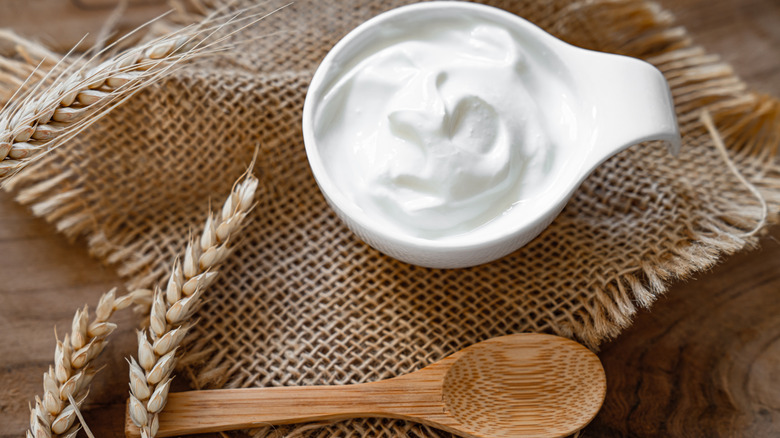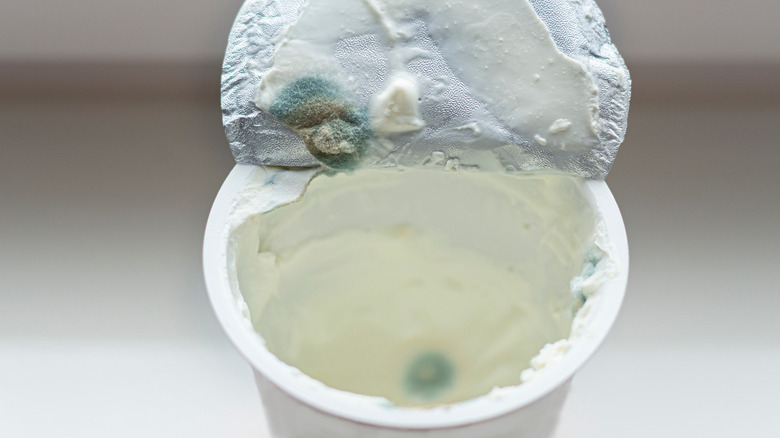How To Know If Your Sour Cream Is No Longer Safe To Eat
Sour cream is a versatile star in the kitchen, adding tangy creaminess to Mexican food, dips, soups, baked goods, and even desserts. Still, the name and unusual nature of the ingredient may create a little uncertainty about just how long that carton is good to use. The USDA offers a relatively wide range of one to three weeks, forcing home cooks to decide for themselves. Fortunately, it's relatively easy to figure out if your sour cream is no longer safe to eat, thanks to a few telltale signs.
The most obvious and immediately apparent signals that the sour cream is no longer edible are visual. First, any mold growing on the surface of it is a surefire sign to toss out the container. Don't just scoop out or remove any moldy spots, as the fungus might have spread through the entire portion by the time you're able to see it. In addition, changes to sour cream's traditional pure-white color to yellow or gray also suggest it may be past its prime.
The nose knows
Those questioning their sour cream should also use their nose. Although sour cream has a naturally tangy smell, you should avoid eating it if it's developed a powerfully sour, rotten, or otherwise unpleasant odor.
On the other hand, don't immediately assume it's gone bad if the sour cream gets watery. Though separation can be a common sign your food has gone bad, in this case, it's a natural process resulting from the whey separating from the rest of the mixture. Typically, it can just be stirred back in to restore the texture. However, the liquid can also be a sign your sour cream is past its prime if it's present with other signs of spoilage.
If you're still uncertain after considering all these factors, a final way to determine whether your sour cream should be used or tossed is through taste. Try a small amount to verify it still has the flavor and texture you expect. To avoid potential food poisoning, don't sample too much initially in case has gone bad.

